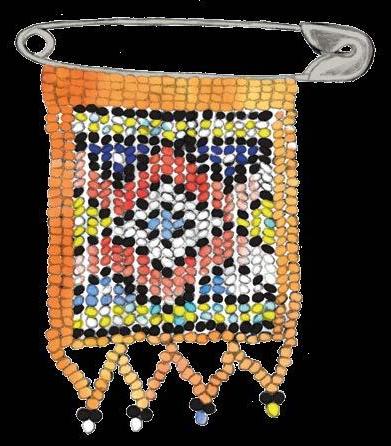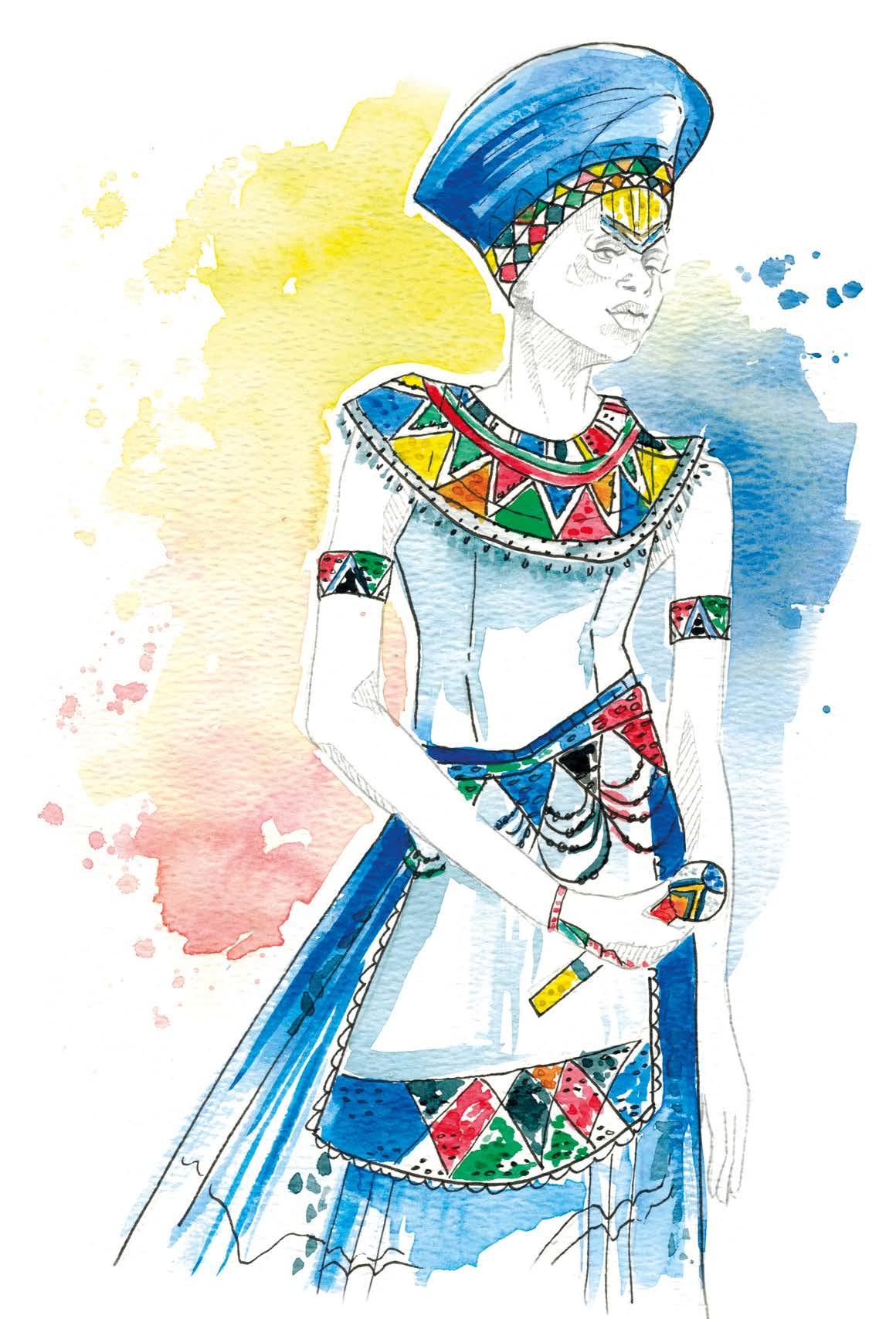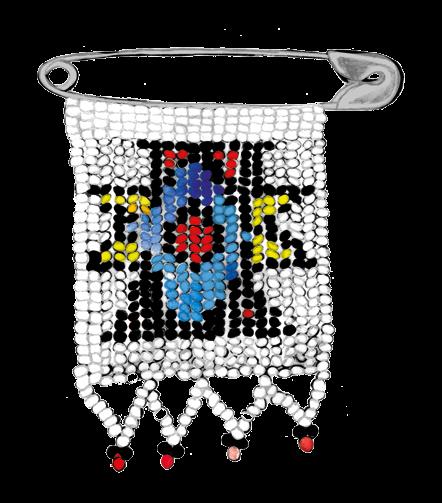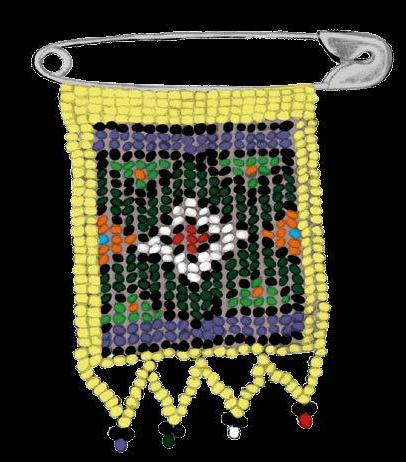
5 minute read
Cracking The Code
the code

Advertisement


CAN I TELL YOU A SECRET?
I’ve never received a love letter. Not even a cut-out cardboard red heart, scrawled in crayon. I used to long for a grammatically correct, well-spelt missive that spoke of untold passion and unreached depths of desire; alas, however, my tastes tend to run to the boorish as opposed to the erudite of the male species. How do I disguise my lack of epistolary affection? Do I wait out my declining years in the hope of a dashing, distinguished silver fox, a man of letters? Ah, no. I do what any modern, young(ish) woman would do – I, the goddess of love, become the sender rather than the receiver. Now why have I wasted time waiting, waiting, waiting, when instead, I could have embraced the subtle art form that is the Zulu love letter?

Made and delivered only by women, the Zulu love letter, at first glance, could be misinterpreted as brightly coloured beadery. Nothing more than frippery, decoration, a technicolour jamboree, to be sported by the beloved. Yet, each individually crafted piece conveys a multitude of layer and meaning for the recipient to interpret; a complex interplay of communication between male and female (as if it were ever anything but). Any beadwork worn by a man has been given to him by a woman, which can help bridge awkward communication such as; “does your wife/girlfriend/partner know that you visit this bar/supermarket/office?”’’ while casting surreptitious glances towards ring fingers. Even if a man wanted to give a love letter to his beloved, a female member of his family would have to assist in playing cupid. Far from being mere decoration, these love letters are representative of Zulu social values and culture. Clearly, when it comes to matters of the heart, the warriors are the women.
These love letters or incwadi (translation: one writes in order that the other should reply) have been around since before the invention of plastic or even glass beads. Prior to that, seeds, ostrich eggshell, and seashells were just as effective at communicating love. As with most cultures, matters of the heart are not mere trifles to while away idle days. In the Zulu culture, marriage is seen as an important transition to adulthood, with married couples awarded higher status or seniority than their unmarried counterparts. Those Zulu adults whose status is “unmarried” are not yet complete, not yet adult. Not surprisingly, being married is an aspirational status to reach – apparently it isn’t just Jerry Maguire who recognises the power of the words “you complete me”.
So it stands to reason that the bead “language” of Zulu women needs to observe certain social rules in its design. The basic design shape is that of a triangle (ibheqe); its three points representing father, mother and child. Depending on its position, it denotes marital status. If the apex points downwards, the female wearer is unmarried or “unfulfilled”. If the apex of an inverted triangle points downwards, the wearer is an unmarried man. Two triangles joined together at the base to form a diamond or egg (symbol of fertility), signifies “completion” or marriage. Two triangles meeting together at the apexes (hourglass) mean that a man is married. Should a woman wish to express her love for a man, she would bead a white triangle with apex down, enclosing a red triangle with apex up. But there’s more to these love letters than just the arrangement of the beads.
Part of the key to interpreting meaning is understanding not only the symbols but how colour is aligned within them, to let Mr. Right know exactly how she feels, without having to say a word.
In this particular language of love, there are many colours, not just the fiery Hallmark red so beloved by marketers everywhere. As much as you may wish for said deep red passion, there is also the green of domestic bliss and contentment. As the song suggests, you can’t have one without the other. Blue next to white signifies fidelity, whereas blue, white and black denotes marriage. But that’s only if this particular love letter is positive.
The Zulu love letter also acknowledges the seamier side of love – the trials, tribulations, sagas and betrayals – as well as the hearts and flowers that Western love letters seem bewitched by. Not quite so much a love letter, as an “unlove” letter. So, the colour green might also well mean illness or discord, and the colour red, anger. Could that be interpreted as the (previous) object of their affection making the sender sick to the stomach? Or, is it an indication that their bad-tempered nature is causing discord in the relationship? I’m not sure. Pink, seen in some cultures as synonymous with femininity, indicates a suggestion that the recipient might not want to gamble away the lobola money. Certain colours may be used more than others to emphasise meaning - an abundance of yellow, far from being bright and sunny, in a negative light can mean withering away.
For the recipient, the task is in the interpretation. What did she mean? What is she asking? How do the colours read the patterns of her heart? Not surprisingly, men require their mothers or sisters to help crack these female codes, being less fluent in speaking “female”. I know what you’re thinking though. I pondered the answer myself. How do you manage to keep beading without losing both your eyesight and your intended as you wrestle with said beads? The answer to that conundrum lies in their size - think more postage stamp than A5 card. Within a few short hours, this simple love letter can be completed, richly layered in meaning, ready to confound, baffle and delight the recipient.
I guess the only thing left to decide is who said lucky recipient will be.










